Overclocking EVGA RTX 3080 FTW3 HYBRID
In order to overclock the EVGA GeForce RTX 3080 FTW3 ULTRA HYBRID GAMING video card, we are using the manufacturer-provided overclocking software. In this case, it is EVGA Precision X1. This is our highest stable overclock shown below.
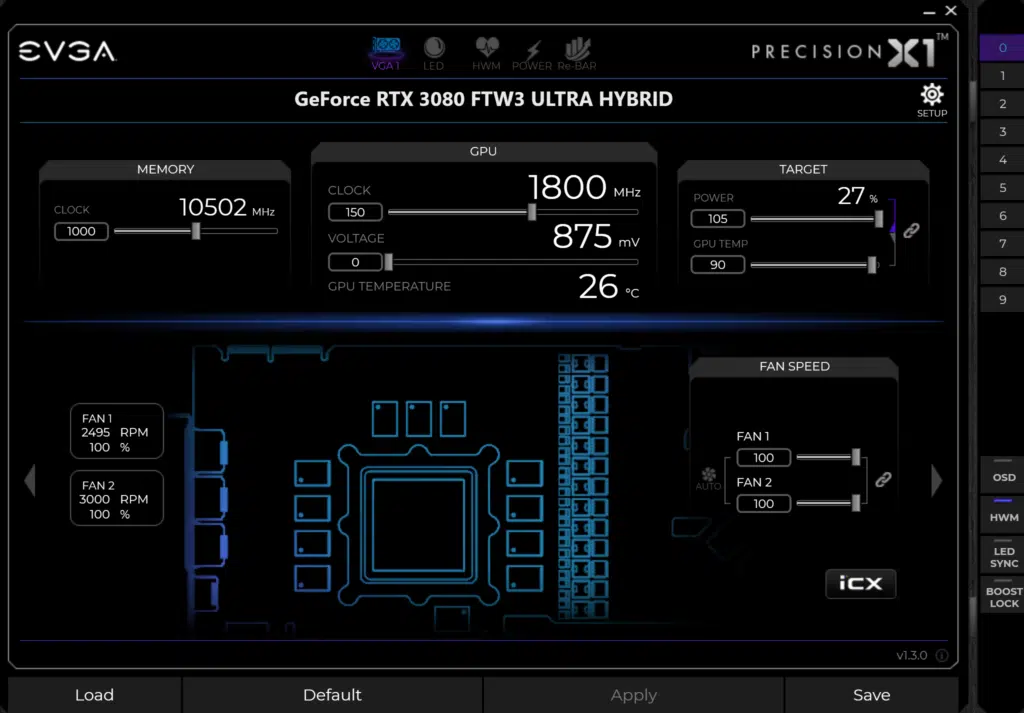
How do you overclock the EVGA GeForce RTX 3080 FTW3 ULTRA HYBRID GAMING video card? Well quite easily actually. First, we simply raise the Power Target, which unfortunately is rather small at just 5% over default or 105% versus 100%. This doesn’t leave a lot of power headroom. We can also manipulate the fan speed separately, but for our OC purposes, we set them to 100%. Then it was just a matter of dialing up the memory and GPU frequency.
Our final clock speed consisted of an offset of +150 to the GPU clock and +1000 to the memory clock. For the memory, this brought us up to 21GHz from the default of 19GHz. This brought the bandwidth up to 840GB/s. For the actual GPU clock frequency increase look below.
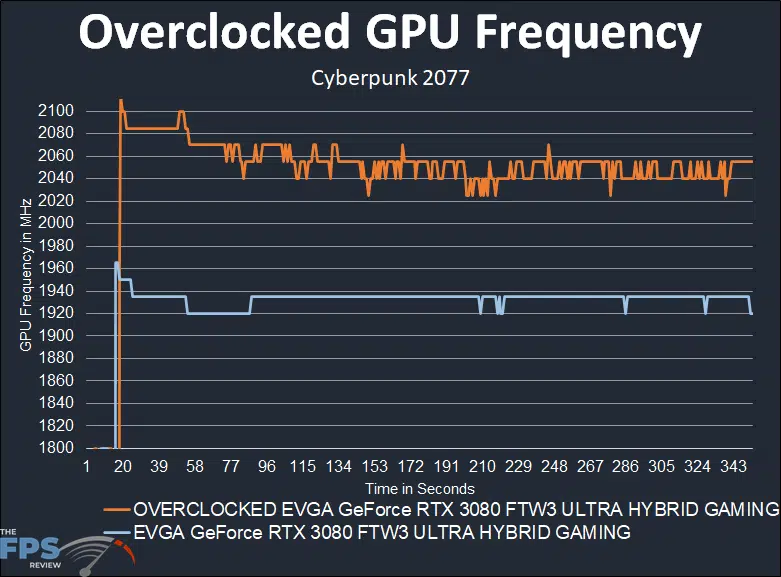
With +150 on the offset, it brings the actual real-world frequency up to around 2040-2060MHz from the default 1935MHz. That’s about a six and a half percent overclock from the stock factory GPU Boost or 125MHz. This isn’t the highest overclock we’ve seen on a GeForce RTX 3080, but it is still commendable. The limiting factor for overclocking this video card is the power limit/TDP. There just isn’t a lot of headroom with the small 5% power limit increase it allows.
When you overclock VRAM, in this case, GDDR6X, that consumes a lot of board power which can take away from the maximum GPU frequency. If we leave the memory alone completely and leave it at 19GHz we could squeeze a little more out of the GPU, about 2075-2080MHz at the extreme here. The thing about this overclock, is that either way due to the AIO the GPU temperatures are excellent and the sound profile very low. The GPU is not held back at all thermally, it is only held back by power limits.
GPUz
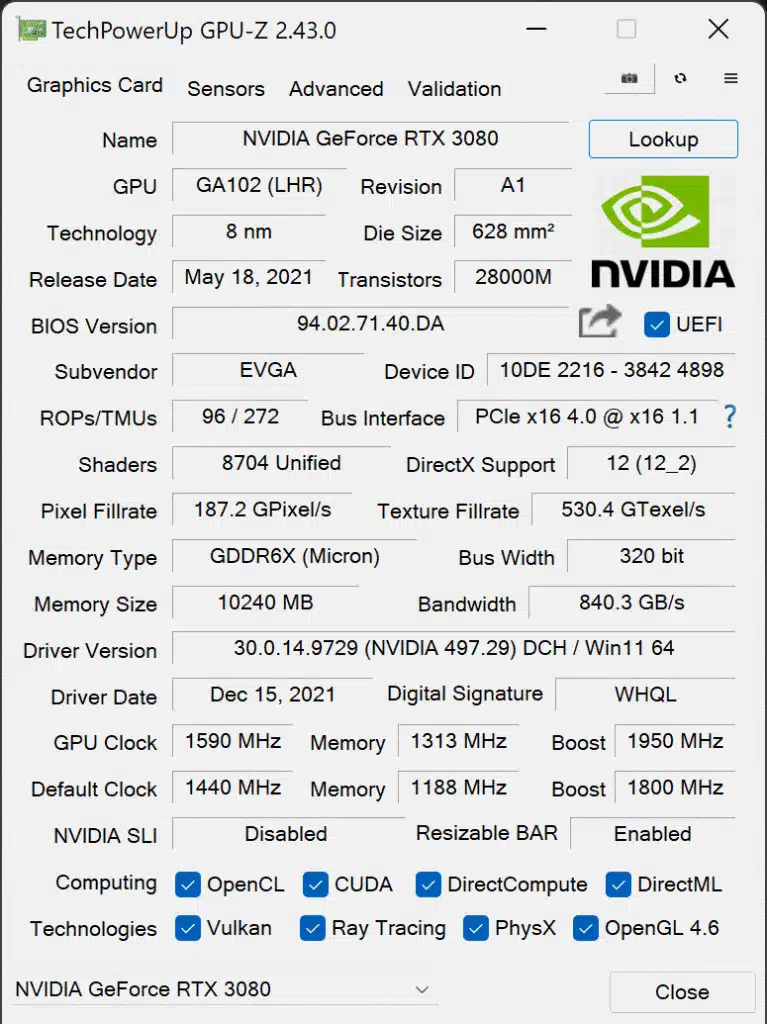
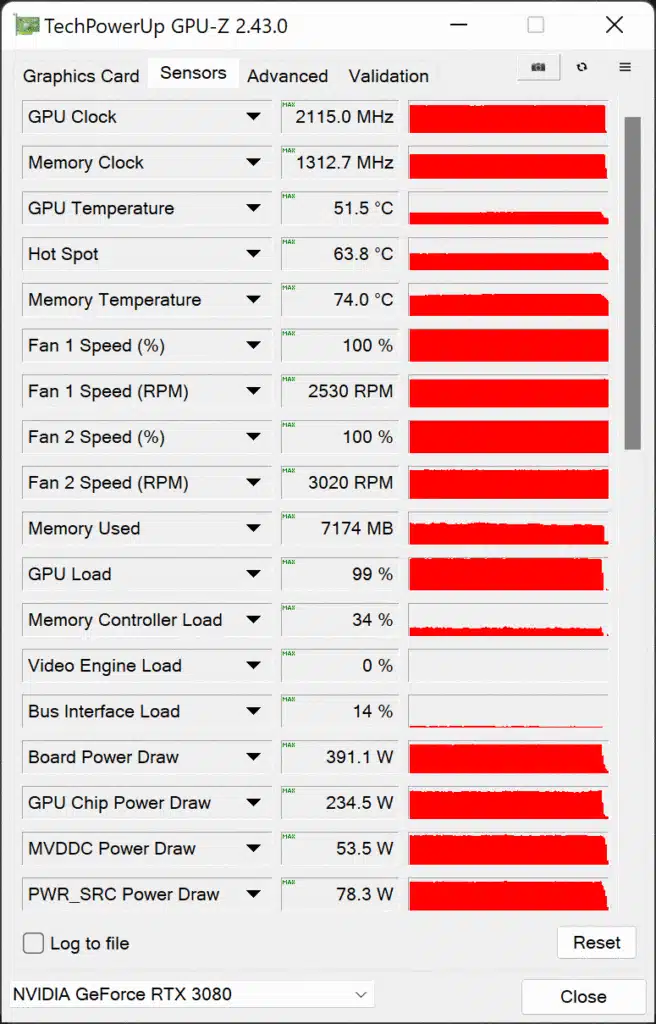
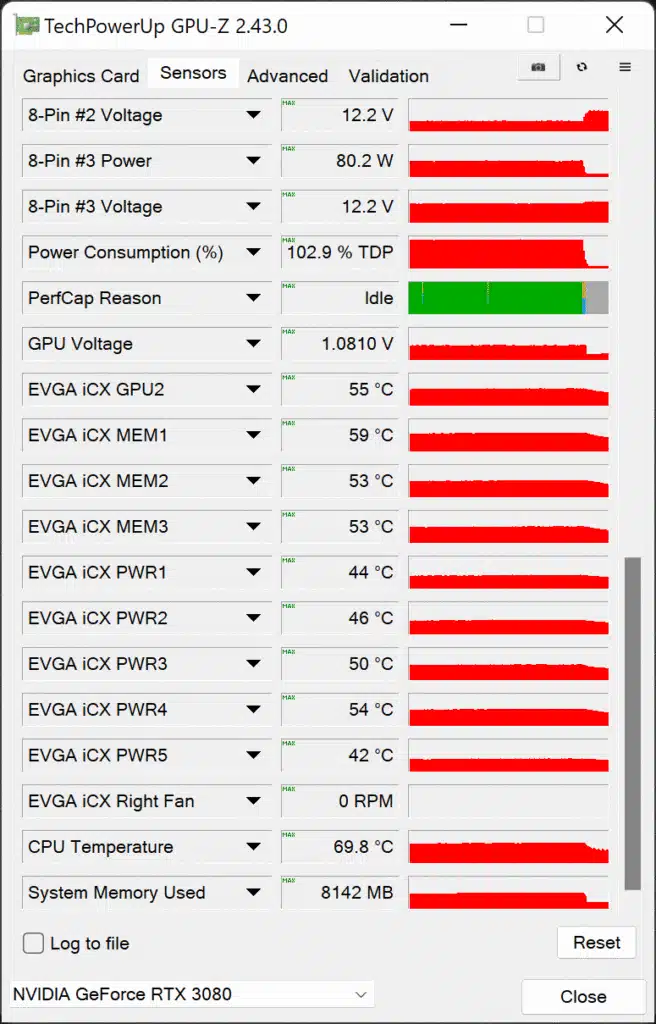
The temperatures shown in GPUz show why the AIO is preferred for overclocking. Yes, we are running the fans at 100%, but only to ensure the highest possible overclock. With this maximum overclock GPU Temperature stays at a low 51.5c and the Hot Spot is at 63.8c, so this GPU is well cooled. In addition, memory, which when overclocked can get very hot, is only at 74c, which is a really incredible temperature for the memory overclocked at 21GHz. We can also see all the other iCX temperature points for memory modules and power delivery, and all of them are at incredibly, and I do say incredibly, cool temperatures for being pushed to their limits on overclocking. This is just, well cooled, what can we say.
